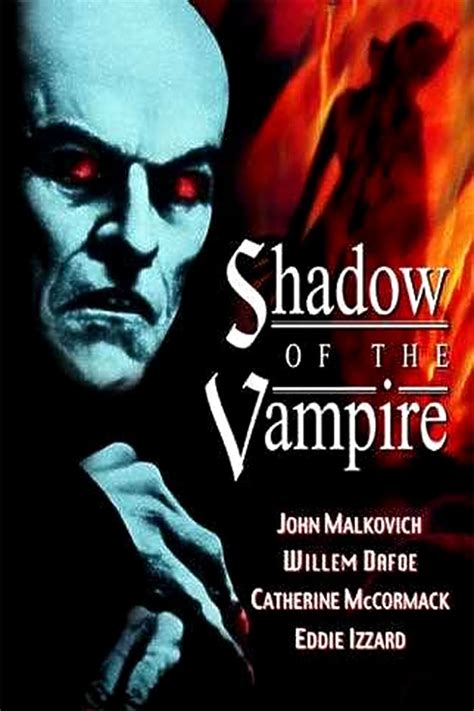Shadow of the Vampire

Description:
Shadow of the Vampire is a 2000 horror drama film that imagines the making of the classic horror movie Nosferatu. It explores the relationship between director F.W. Murnau and the mysterious actor Max Schreck, who may not be what he seems. As filming progresses, the lines between reality and fiction blur, leading to a thrilling and chilling conclusion.Keywords:
Metafiction, Obsession, Vampirism, Filmmaking, HorrorHow much of Shadow of the Vampire is true?
"Shadow of the Vampire" is a fictionalized account of the making of the 1922 silent film "Nosferatu." The movie suggests that Max Schreck, who portrayed Count Orlok, was an actual vampire, which is a myth. While "Nosferatu" faced legal issues due to its unauthorized adaptation of Bram Stoker's "Dracula," the film's production details and the eccentricities of its cast and crew are dramatized for entertainment. Therefore, while it draws from real events, the supernatural elements and portrayal of Schreck are purely fictional.
Is Shadow of the Vampire a comedy?
"Shadow of the Vampire" is not a comedy; it is a horror-drama film that blends elements of fantasy and psychological thriller. Released in 2000, the movie presents a fictionalized account of the making of the 1922 silent film "Nosferatu," suggesting that the actor Max Schreck, who portrayed Count Orlok, is an actual vampire. The film explores themes of obsession, artistry, and the blurred lines between reality and fiction, with a dark and unsettling tone rather than comedic elements.
What streaming service is Shadow of the Vampire on?
As of my last update in October 2023, "Shadow of the Vampire" is available for streaming on platforms like Amazon Prime Video and Apple TV. However, availability can vary by region and over time, so it's best to check your local streaming services or rental options for the most current information.
What is the point of Shadow of the Vampire?
"Shadow of the Vampire" is a fictionalized account of the making of F.W. Murnau's 1922 film "Nosferatu." It explores the blurred lines between reality and fiction by portraying the actor Max Schreck as an actual vampire, suggesting that his eerie performance stems from his true nature. The film delves into themes of obsession, artistic sacrifice, and the cost of creativity, highlighting the dark side of filmmaking and the lengths to which artists will go for their art. It raises questions about the nature of horror and the ethics of artistic expression.
Explore More Categories: